Few herbs capture the essence of freshness quite like dill. With its feathery green leaves and tangy aroma, dill has earned a cherished spot in American kitchens and gardens. Whether you’re whipping up homemade pickles, seasoning salmon, or sprinkling it over potato salad, dill adds a bright, herby flavor that instantly lifts a dish.
But dill isn’t just about taste—it’s a nutrient-rich, easy-to-grow herb that supports digestion, boosts immunity, and brings old-fashioned charm to modern cooking. From backyard gardeners to home chefs, Americans across the country have fallen in love with dill’s versatility and refreshing character.
In this article, we’ll explore everything you need to know about dill—its history, health benefits, how to grow it, and creative ways to use it in your kitchen.
A Brief History of Dill
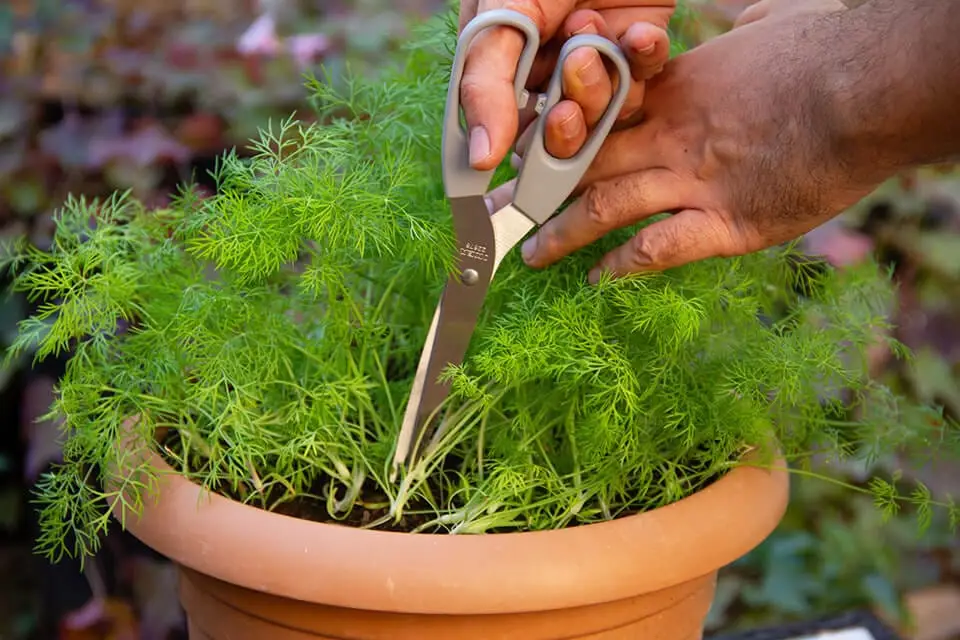
Dill (Anethum graveolens) has been cultivated for thousands of years. Originating in Mediterranean and Middle Eastern regions, it was prized by the ancient Egyptians, Greeks, and Romans for its culinary and medicinal uses. The name “dill” comes from the old Norse word dylla, meaning “to soothe,” referring to its traditional use in calming digestion.
European settlers brought dill seeds to North America in the 17th century, where it quickly became a staple in colonial gardens. Today, it’s especially beloved in American home canning, pickling traditions, and seafood recipes, symbolizing freshness and flavor in both old-fashioned and modern dishes.
Types of Dill
There are several varieties of dill that thrive across the United States. The most common ones include:
- Bouquet Dill – The most popular type for pickling and cooking, known for its strong aroma and large seed heads.
- Fernleaf Dill – A compact variety ideal for containers and small gardens. It has delicate, fern-like leaves perfect for garnishes and salads.
- Mammoth Dill – Grows tall and is often used in large gardens or for harvesting seeds.
- Dukat Dill – Has a sweeter, milder flavor, making it a favorite for fresh culinary use.
Each type brings its own charm, whether you’re flavoring pickles, making dressings, or adding greenery to your garden.
Health Benefits of Dill
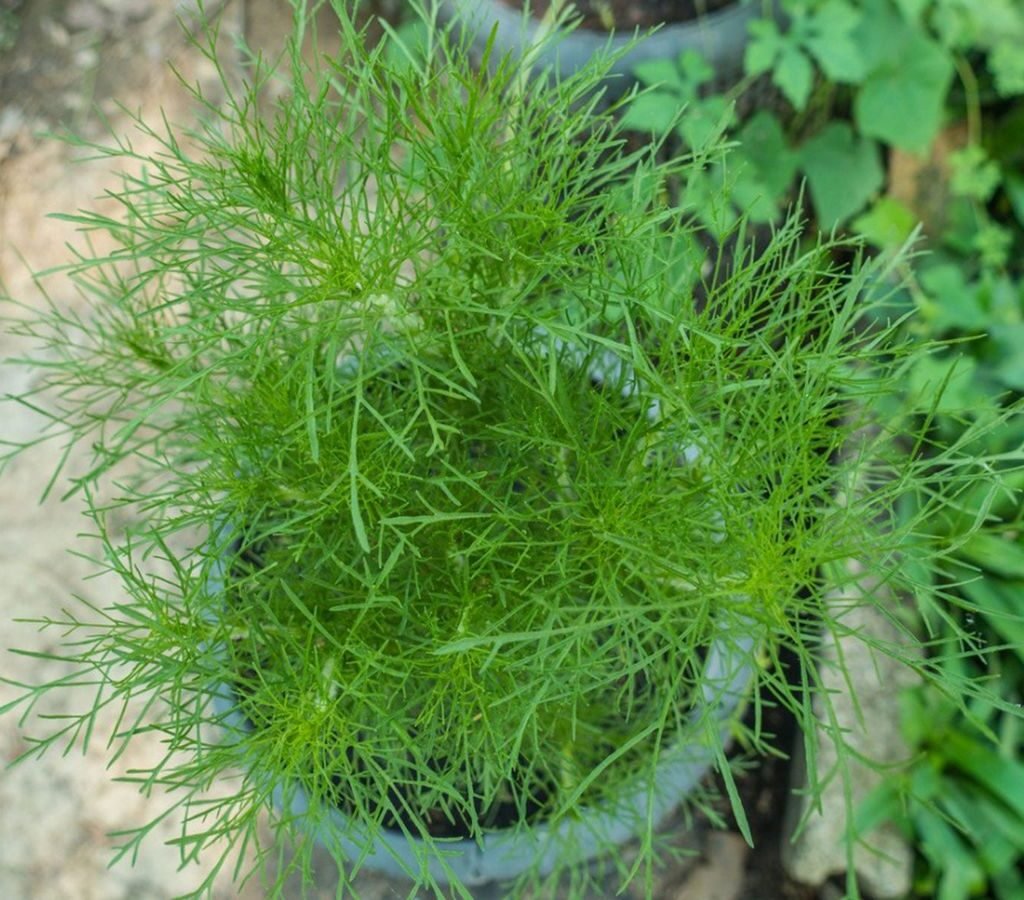
Dill isn’t just a flavorful herb—it’s also packed with nutrients that promote better health. A few sprigs can make a difference both in taste and wellness.
1. Rich in Vitamins and Minerals
Dill is loaded with vitamins A and C, essential for immune support and healthy skin, and minerals like calcium, iron, and manganese that strengthen bones and aid metabolism.
2. Supports Digestion
For centuries, dill has been used as a natural remedy for stomach discomfort. Its essential oils stimulate digestive enzymes, helping relieve bloating and indigestion.
3. Promotes Heart Health
Compounds in dill may help lower cholesterol levels and reduce blood sugar, making it heart-healthy when paired with a balanced diet.
4. Boosts Immunity
Dill’s antioxidants help protect against free radicals, enhancing the body’s natural defense system.
5. Natural Sleep Aid
The herb contains flavonoids that can have a calming effect, supporting relaxation and better sleep when consumed in teas or light evening meals.
6. Antibacterial and Anti-Inflammatory
Dill’s oils possess antimicrobial properties that help fight harmful bacteria, while its anti-inflammatory effects can support joint and overall health.
So next time you season your salmon or pickle cucumbers, you’re not just adding flavor—you’re adding nutrients that work for your well-being.
Growing Dill in Your American Garden
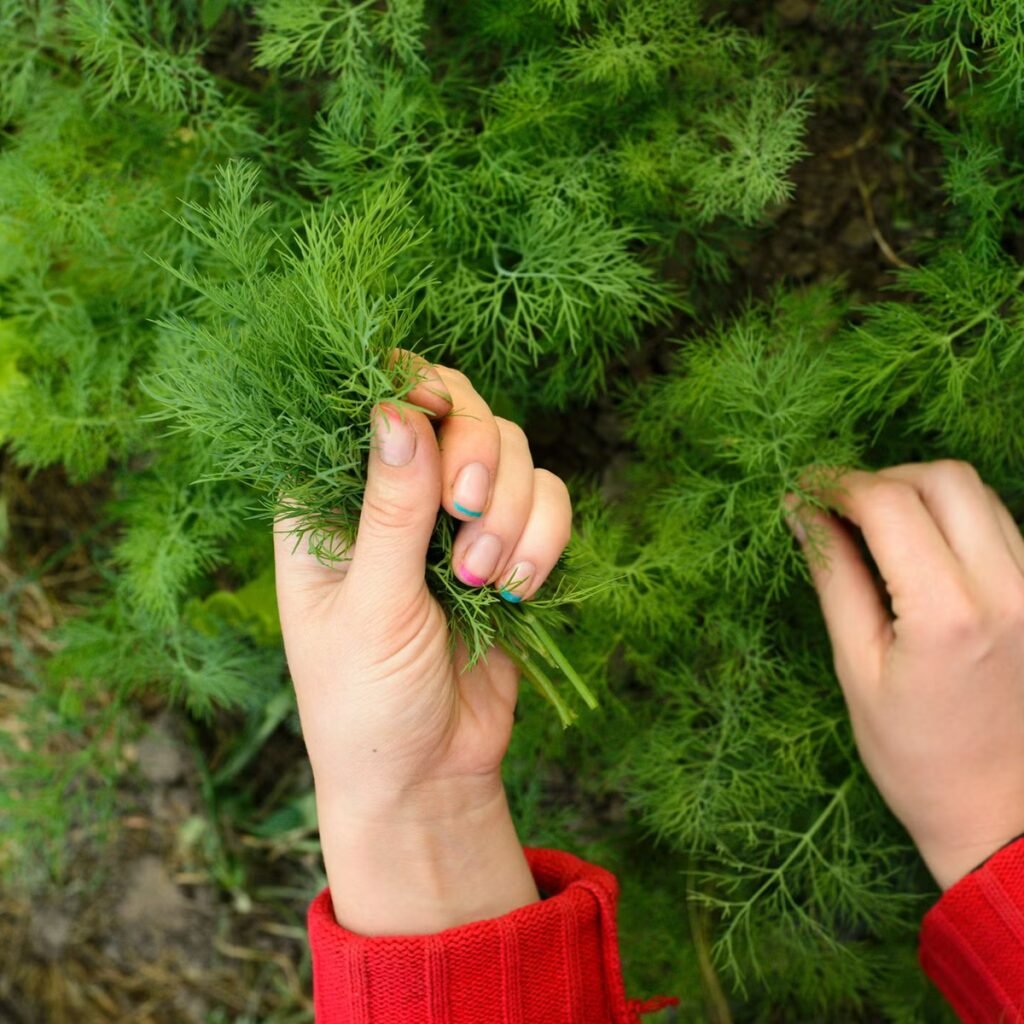
Dill is one of the easiest herbs to grow in the U.S., making it perfect for beginner gardeners and seasoned growers alike. It thrives in most climates and brings a delightful fragrance to any garden.
1. Ideal Growing Conditions
- Sunlight: Dill loves full sun—at least 6 hours daily.
- Soil: It prefers well-drained, slightly acidic soil (pH 5.5–6.5).
- Temperature: Grows best in cool to mild climates (60–70°F).
2. Planting Tips
- Sow directly into the garden after the last frost, as dill doesn’t transplant well.
- Plant seeds about ¼ inch deep and 12 inches apart.
- Keep soil consistently moist until seedlings appear (about 7–10 days).
3. Watering and Care
Water regularly, especially during dry spells. Dill doesn’t like soggy soil, so ensure proper drainage. You can also support tall varieties with small stakes to prevent them from bending in the wind.
4. Harvesting Dill
- Leaves: Begin harvesting when the plant reaches 8 inches tall. Pick the feathery leaves for the best flavor before it flowers.
- Seeds: Allow the flowers to dry and turn brown, then cut and hang them upside down in a paper bag to collect the seeds.
5. Companion Planting
Dill grows beautifully alongside cabbage, cucumbers, lettuce, onions, and asparagus. However, avoid planting it near carrots or tomatoes, as it can affect their growth.
Storing and Preserving Dill
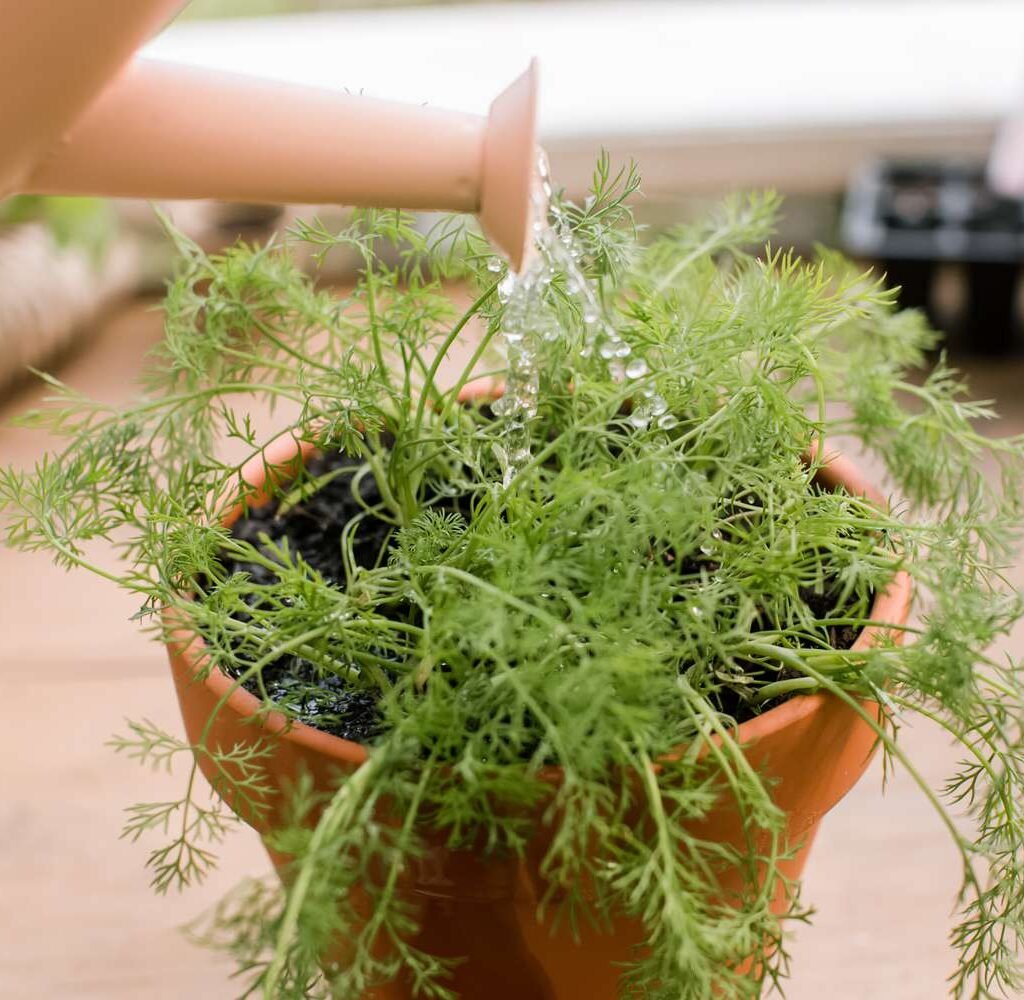
Fresh dill’s delicate flavor fades quickly, but there are easy ways to preserve it for year-round use.
- Refrigerate: Wrap dill in a damp paper towel and place it in a sealed plastic bag. It will stay fresh for up to a week.
- Freeze: Chop and freeze dill leaves in olive oil or water using ice cube trays. Perfect for soups and sauces.
- Dry: Hang dill sprigs upside down in a dark, dry place for a week. Once crisp, crumble and store in airtight containers.
- Pickle: Preserve dill heads with vinegar and salt to make classic dill pickles or flavored brines.
Culinary Uses of Dill in American Cooking
Dill’s tangy, slightly sweet flavor makes it one of the most versatile herbs in American kitchens. It’s a favorite in everything from New England seafood to Southern salads and Midwestern pickles.
Here are some of the best ways to use dill in your cooking:
1. Classic Dill Pickles
The American favorite that started it all!
Ingredients:
- 8 small cucumbers
- 4 cups water
- 1 cup white vinegar
- 2 tbsp salt
- 4–6 dill sprigs
- 2 garlic cloves
Boil the water, vinegar, and salt. Pour over cucumbers and dill in sterilized jars. Seal and refrigerate for a week for crisp, flavorful pickles.
2. Creamy Dill Sauce for Fish
Perfect for salmon, trout, or white fish.
Ingredients:
- ½ cup Greek yogurt
- 2 tbsp mayonnaise
- 1 tbsp lemon juice
- 2 tbsp fresh dill, chopped
- Salt and pepper to taste
Mix all ingredients and serve chilled over grilled fish.
3. Dill Potato Salad
A fresh twist on the American BBQ classic.
Ingredients:
- 2 lbs red potatoes, boiled
- ½ cup mayo
- 2 tbsp mustard
- 2 tbsp chopped dill
- ½ cup celery, diced
- Salt and pepper
Toss together and chill before serving.
4. Dill and Cucumber Salad
A light, crisp side for hot summer days.
Ingredients:
- 2 cucumbers, thinly sliced
- 1 tbsp vinegar
- 2 tbsp dill, chopped
- 1 tsp sugar
- Salt to taste
Combine and let sit for 15 minutes to enhance flavor.
5. Dill Butter for Grilled Meats and Bread
Blend softened butter with chopped dill, garlic, and lemon zest. Spread over steaks, corn on the cob, or warm bread for instant flavor.
6. Dill Soup (Koprivka)
A creamy Eastern European-inspired soup that’s gaining popularity in the U.S.
Combine diced potatoes, onions, carrots, and a handful of dill in a creamy broth for a comforting, herb-filled meal.
Dill in Modern American Cuisine
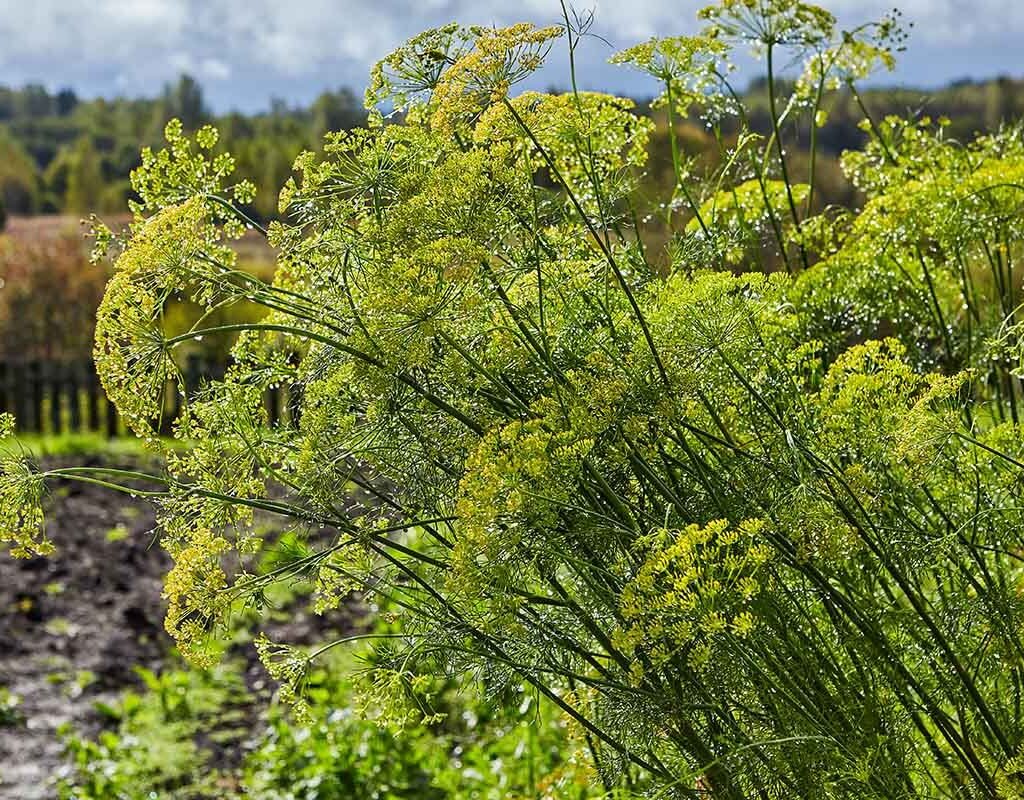
With the rise of farm-to-table dining and home gardening, dill has seen a revival in American kitchens. It’s used in everything from artisan sauces and infused oils to cocktails and baked goods.
Trendy restaurants are incorporating dill into:
- Avocado toast toppings
- Herbed butter sauces
- Gourmet dips and spreads
- Craft cocktails like dill martinis or cucumber-dill gin spritzers
Its unique aroma pairs beautifully with citrus, garlic, mustard, and dairy, making it a favorite among creative chefs.
Fun Facts About Dill
- Dill is part of the same family as carrots, parsley, and celery.
- In ancient Rome, soldiers used dill oil to soothe wounds.
- The U.S. celebrates National Pickle Day on November 14, thanks to dill’s starring role in America’s favorite pickles.
- Dill’s yellow flowers attract beneficial pollinators like butterflies and bees.
Tips for Using Dill Like a Pro
- Add at the end of cooking – Heat weakens its flavor, so sprinkle fresh dill just before serving.
- Use both leaves and seeds – Leaves for freshness, seeds for deeper, tangier notes.
- Pair with the right foods – Dill complements seafood, eggs, potatoes, and yogurt-based dishes perfectly.
- Don’t overdo it – A little dill goes a long way; too much can overpower delicate flavors.
Conclusion
Dill may be small, but its flavor and benefits are mighty. From classic dill pickles and fresh seafood to modern dips and sauces, this herb adds zest and brightness to any meal. Beyond the kitchen, dill is easy to grow, rich in nutrients, and deeply rooted in American culinary tradition.
Whether you’re seasoning grilled salmon, mixing a tangy potato salad, or growing your own herbs this season, dill brings freshness, health, and heritage to your table. It’s no wonder this aromatic green continues to be a favorite across the United States—proof that sometimes, the simplest ingredients deliver the most flavor.
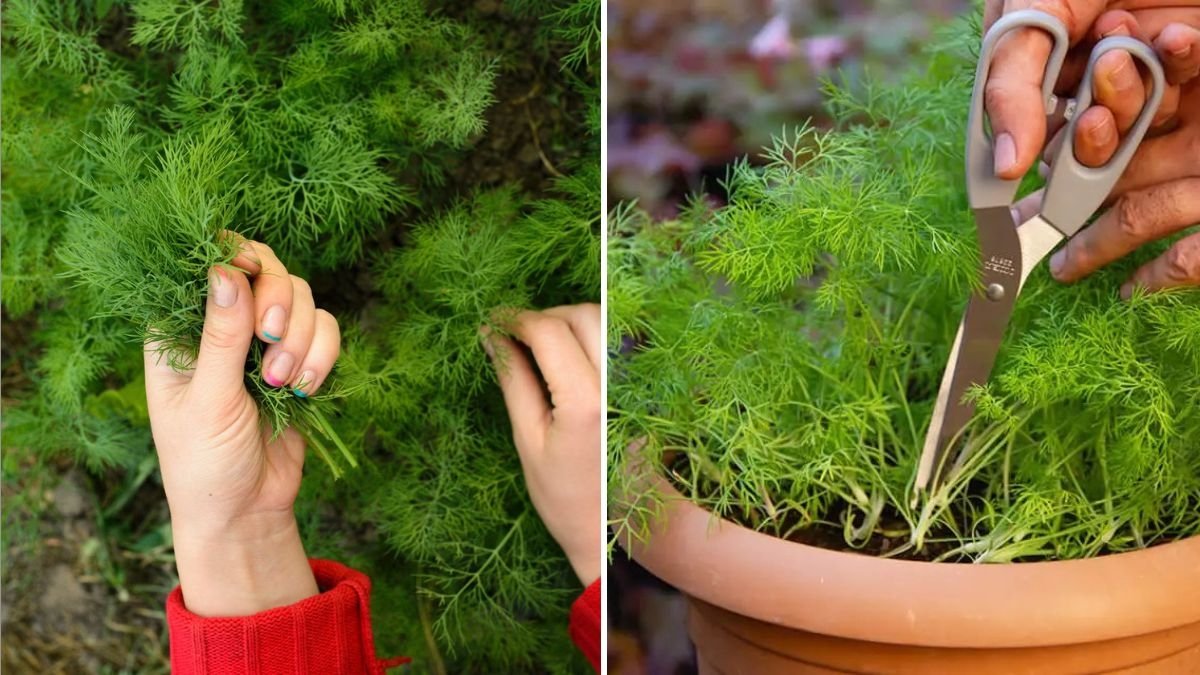
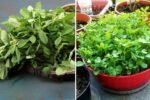
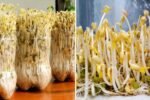
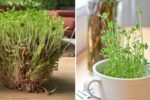
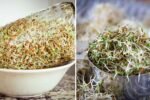
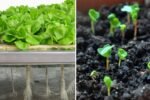
Leave A Comment